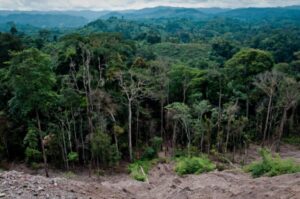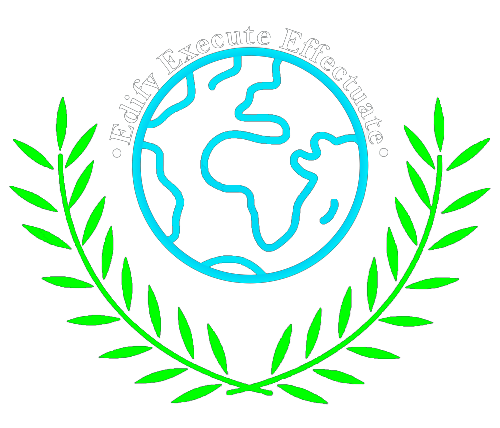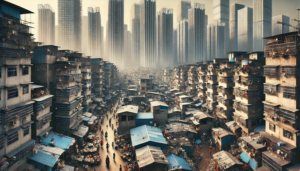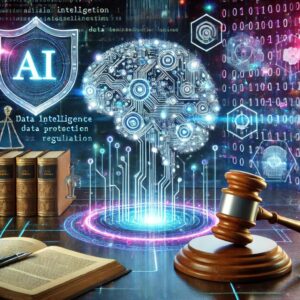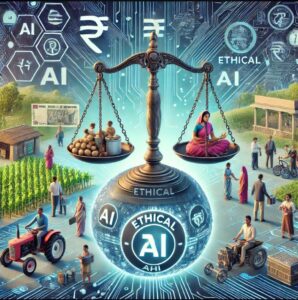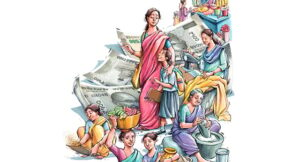1.Ajit Kumar 2.Pranjal Sahay 3. Deepika Mehra 4. Sakshi Agarwal AbstractAs we know, the use of AI is increasing day by day. The advent of AI has brought significant changes on a global scale. Due to AI, manual work has been reduced, and smart automation has evolved. The accuracy of work has increased, and human labour has decreased. AI also saves time. However, with the rise of AI, the misuse of personal data is also increasing. Individuals, companies, and organizations can collect, use, and dispose of personal data with the help of AI. In this technological era, the misuse of personal data is not a big challenge for those skilled in technology. Data misuse is rising, and the crucial question is: how can we control it? Controlling data misuse is a challenging task in today’s digital age. This paper discusses the steps taken at both global and national levels to regulate the misuse of personal data. The European Union implemented the General Data Protection Regulation (GDPR) on May 25, 2018 to safeguard individuals’ privacy. On the other hand, the United States has adopted a sectoral approach to data protection. Various regulations have been enacted, such as the Health Insurance Portability and Accountability Act (HIPAA) and the Gramm-Leach-Bliley Act (GLBA), to regulate data privacy in different sectors. Canada has also introduced legislation to ensure data protection—the Personal Information Protection and Electronic Documents Act (PIPEDA). Recently, Nigeria replaced its old data protection law with the Nigeria Data Protection Act, 2023. Similarly, India passed its new data protection legislation, the Digital Personal Data Protection Act (DPDP Act) of 2023, which came into effect on September 1, 2023. IntroductionThe emergence of artificial intelligence has proved to be a boon for society, benefiting not only individuals but also industries. AI has become a necessary evil in today’s world. It is a man-made intellect created to drive innovation and creativity. AI has demonstrated its significance in ways that were once considered impossible. It not only predicts problems but also provides solutions that can be implemented when needed. From an industrial perspective, AI is contributing its intelligence across various sectors, including education, healthcare, logistics and transportation, retail and e-commerce, banking and financial institutions, and many more. Today, AI is no longer just a luxury but a necessity in our daily lives. However, what is a boon today may become a bane tomorrow, as every coin has two sides. While AI offers immense benefits, it also poses threats, such as the infringement of individuals’ privacy and the rise of cybercrime, which can harm society and hinder progress. To address these challenges, global initiatives have been taken by legislators to protect individual rights and maintain law and order. Legislation has been introduced in the form of data protection laws, such as India’s Digital Personal Data Protection Act (DPDP Act), the European Union’s General Data Protection Regulation (GDPR), and the California Consumer Privacy Act (CCPA) in the United States. These regulations aim to govern how organizations collect, process, and store personal data, highlighting the importance of human intelligence in overseeing artificial intelligence. History of Artificial IntelligenceArtificial Intelligence has become an essential part of our lives. To better understand its functioning, let’s explore its origins. The roots of AI can be traced back to ancient times, as seen in Greek mythology’s mechanical birds and the Golem. The ideas of Aristotle also played a crucial role in shaping early conceptions of AI. Later development in AI With the advent of the digital revolution, scientists envisioned creating a machine that could mimic human intellect. This led to the birth of AI. The term “Artificial Intelligence” was first coined during the Dartmouth Conference. The 1950s and 1960s witnessed early successes in game playing and theorem proving; however, the “AI Winter” of the 1970s followed due to unfulfilled expectations for progress. In the 1980s, expert systems were developed to solve problems using rule-based reasoning. By the 1990s, computing power and data availability had significantly increased. Additionally, machine learning expanded, enabling systems to learn from data without explicit programming. By 2010, neural networks began achieving significant advances in complex data analysis, including image and language processing. A major turning point occurred with the Turing Test, where IBM’s Deep Blue defeated a chess champion, and AlphaGo defeated a Go champion. As AI continues to develop, it has the potential to revolutionize society; however, ethical concerns such as algorithmic bias and employment displacement must be carefully considered. Opportunities with AI AI presents an incredible opportunity, knocking at our doors. This opportunity can be understood from three different perspectives: individual perspective, industrial perspective, and contingent perspective. Individual Perspective AI can be integrated into individuals’ lives to alleviate loneliness. It provides an emotional quotient, offering companionship, especially to people who live alone—whether due to employment reasons or personal circumstances. Certain AI tools like Alexa, Siri, and Rabbit R1 not only answer queries but also engage in polite and meaningful conversations, making users feel less isolated. These technologies act as digital companions or acquaintances. Industrial Perspective AI has benefitted various sectors of society, not just at a national level but on a global scale. Education Sector AI has enabled students to expand their knowledge beyond traditional fields. With the help of AI-powered prompt engineering, students can enhance their research and innovation. It has simplified learning by introducing technologies that prepare students for interviews, skill acquisition, and exploration. Teachers can track students’ progress using AI software like Brisk Teaching, Grade scope, School AI, Magic School, and more. Healthcare Industry AI has proved to be a boon in the healthcare industry. With advanced monitoring technologies, diseases can now be detected in their earlier stages, improving patient outcomes. AI has also reduced errors in dosage administration, introduced virtual nursing assistants, minimized fraud, and streamlined administrative procedures. Transportation Industry In transportation, AI has introduced electric and autonomous vehicles, reducing fuel consumption and environmental impact. These innovations not only cut costs on petrol and diesel but also contribute to a cleaner environment by reducing
